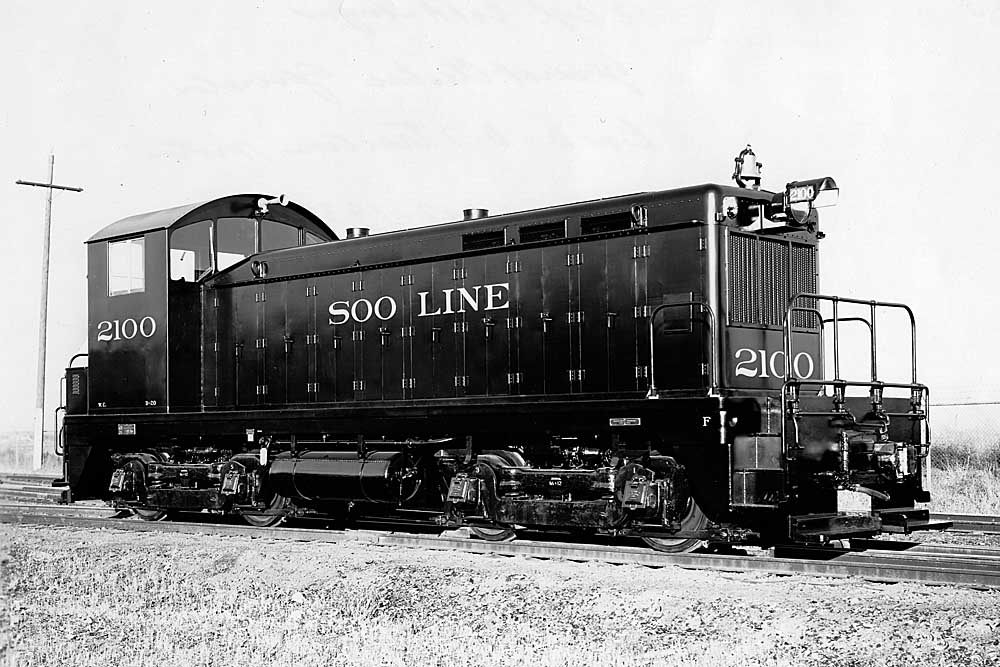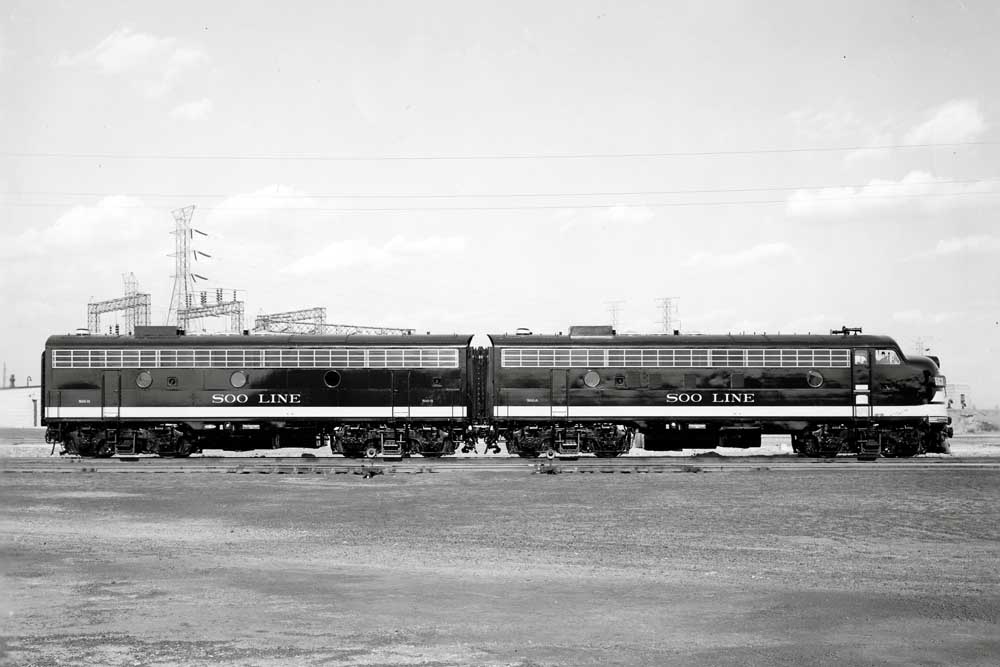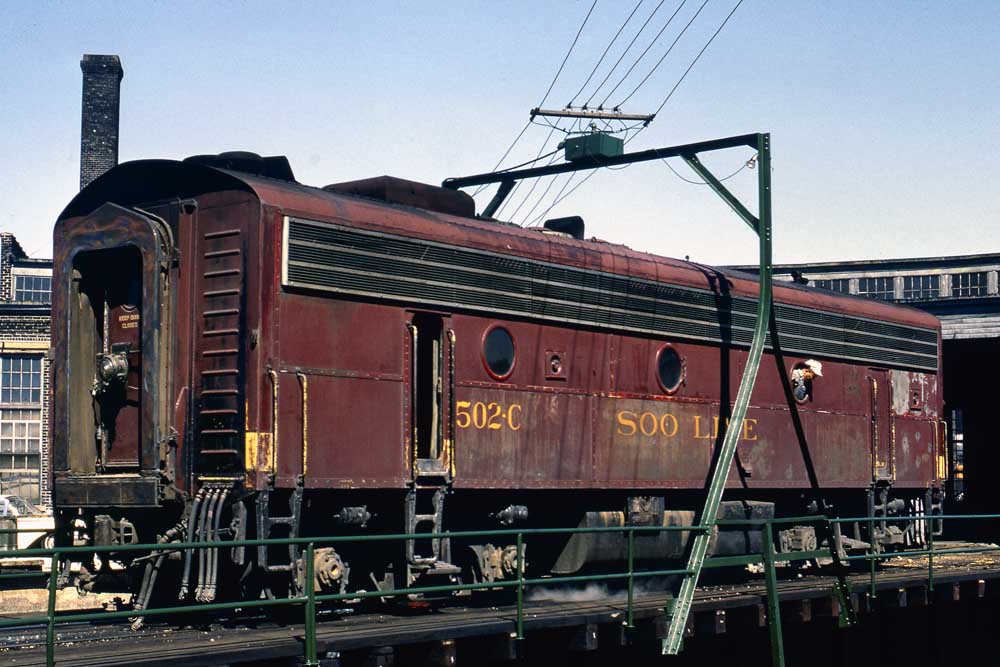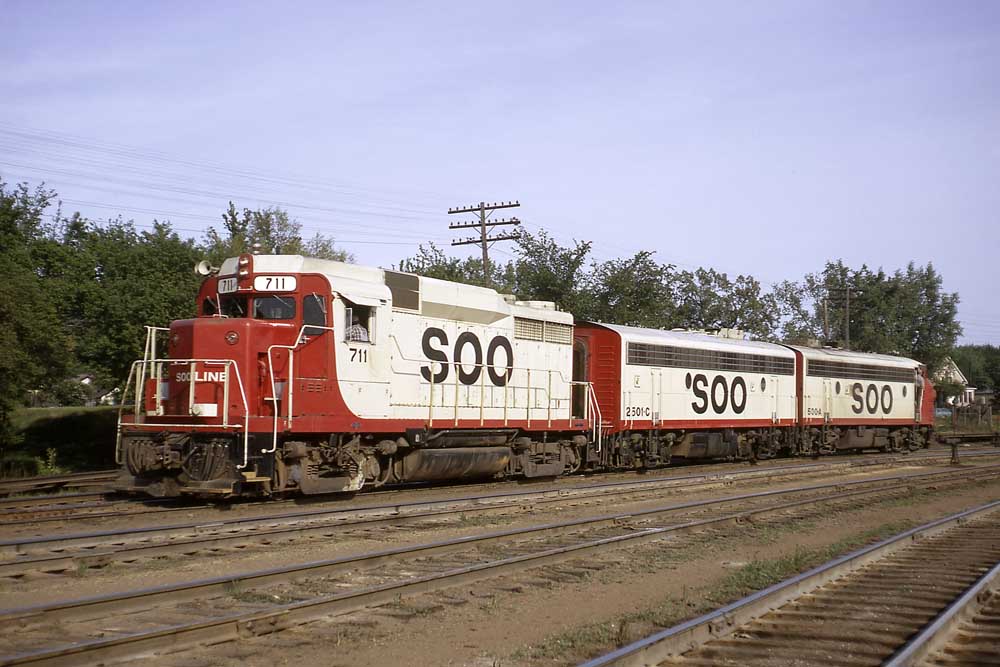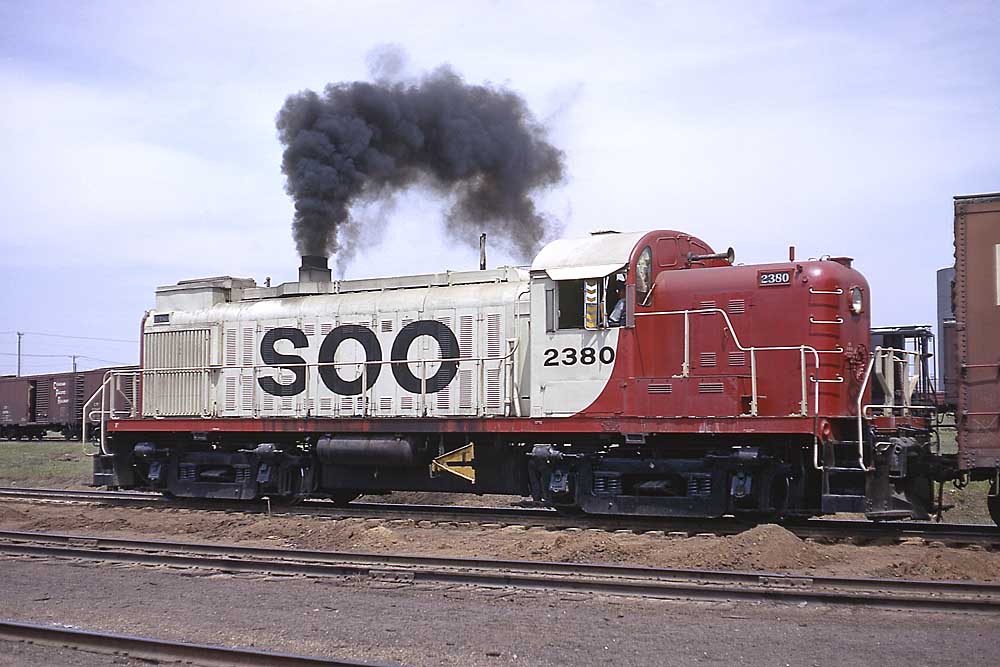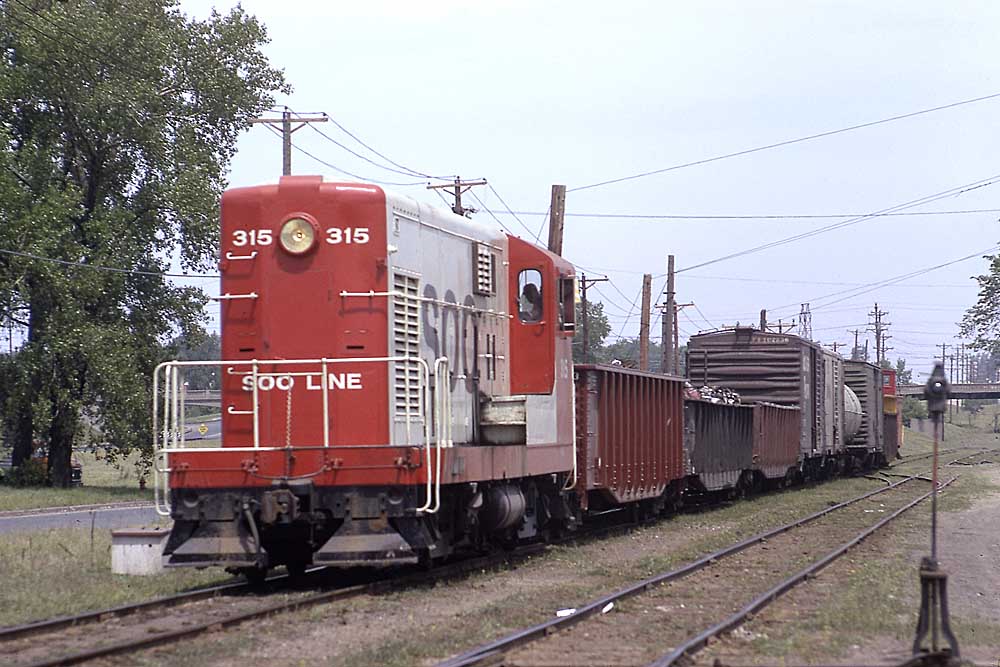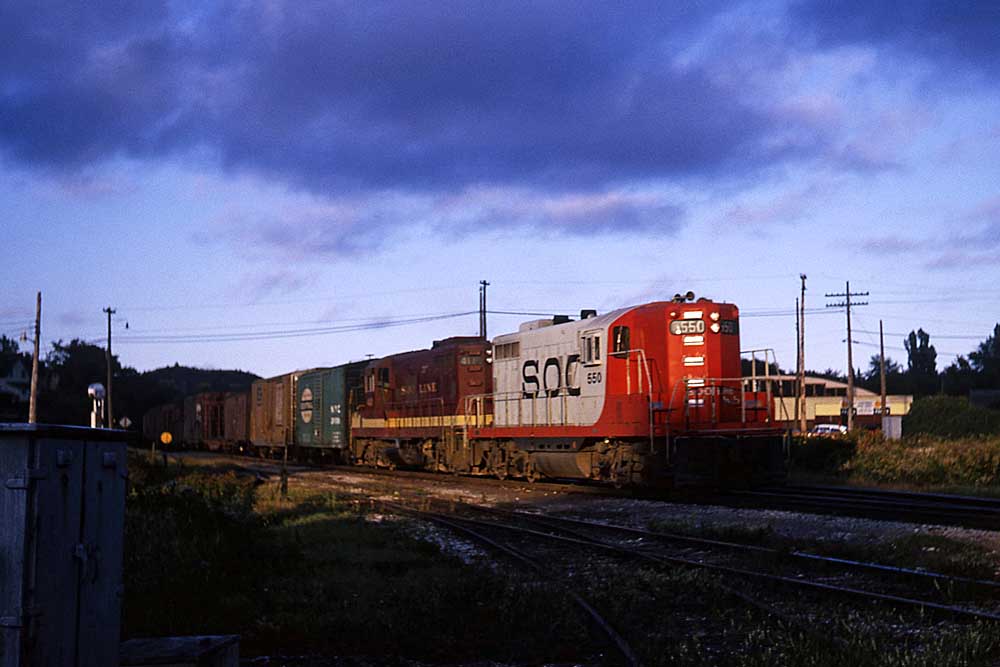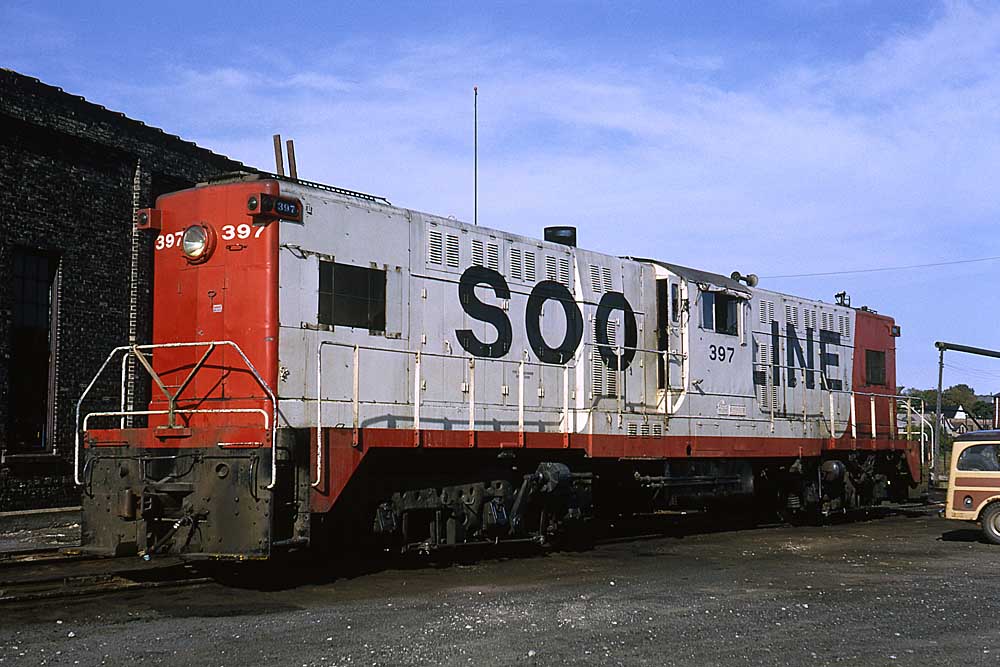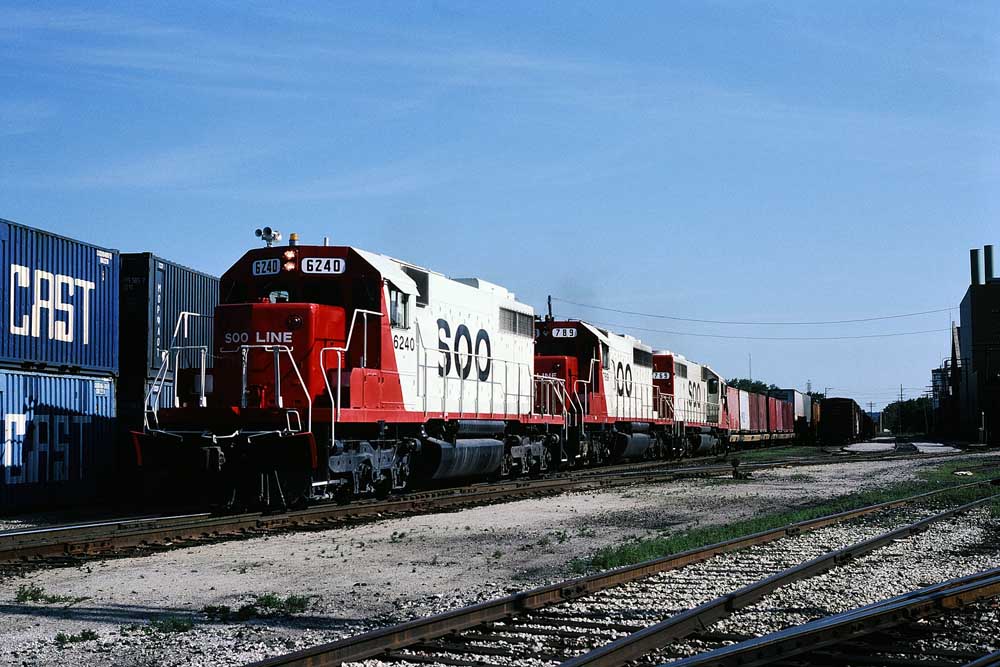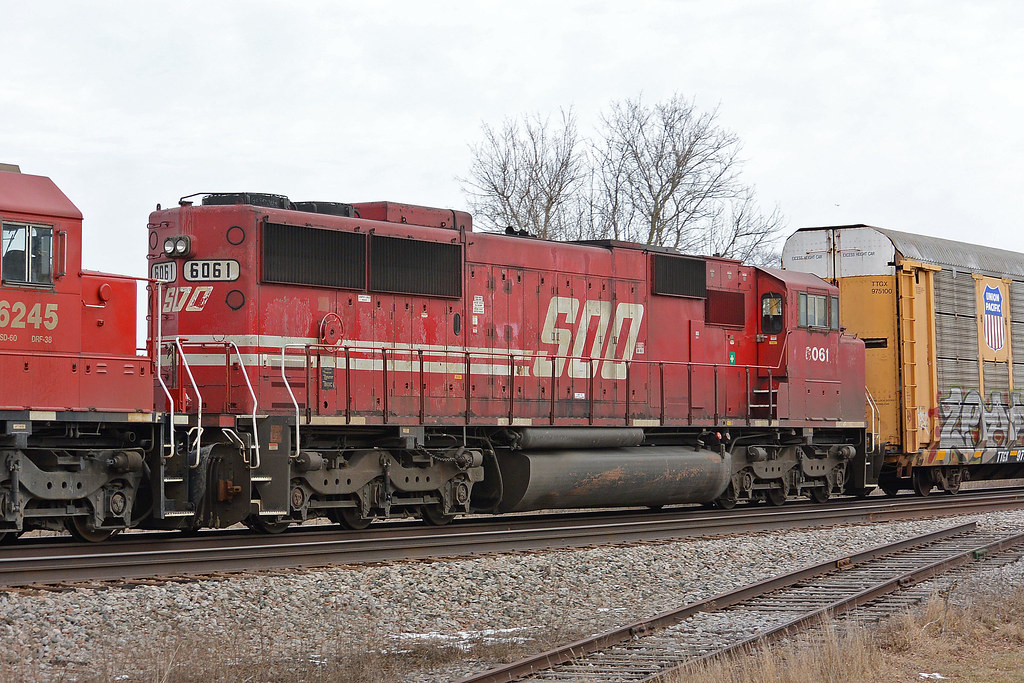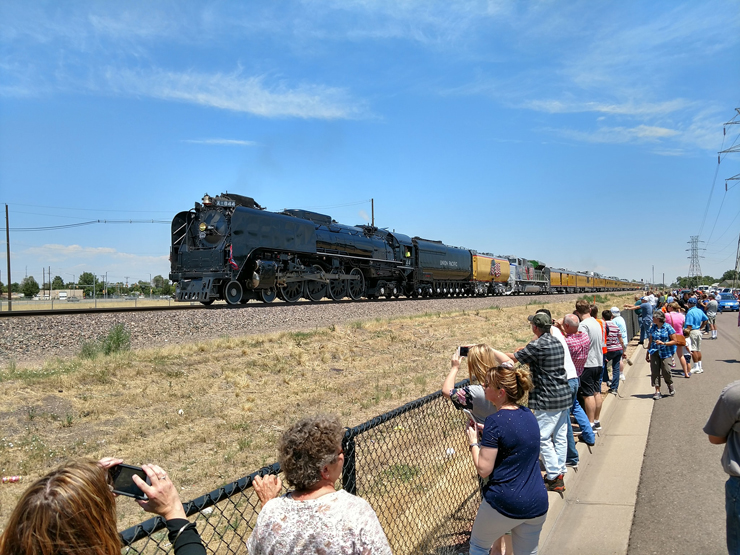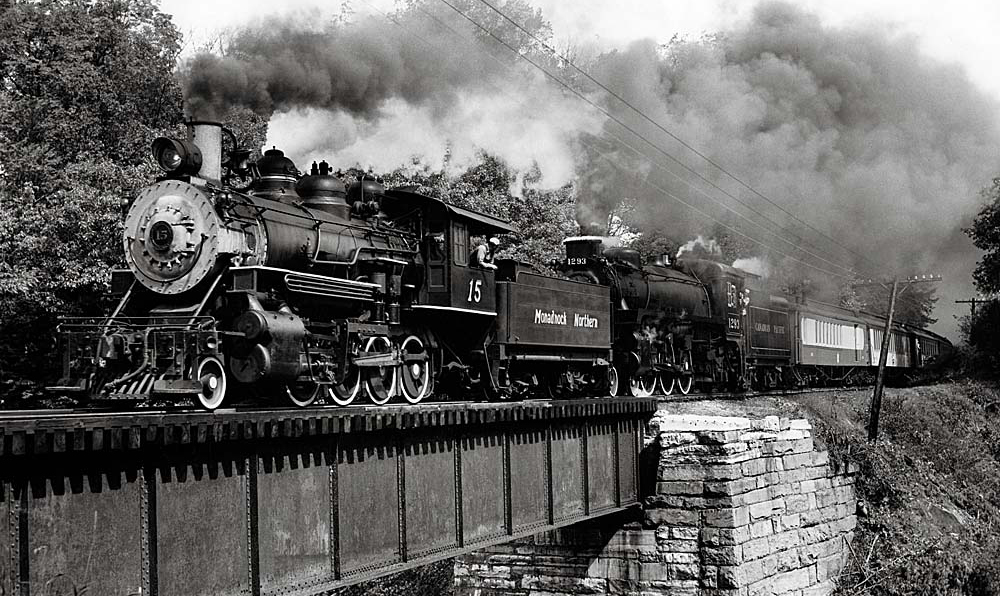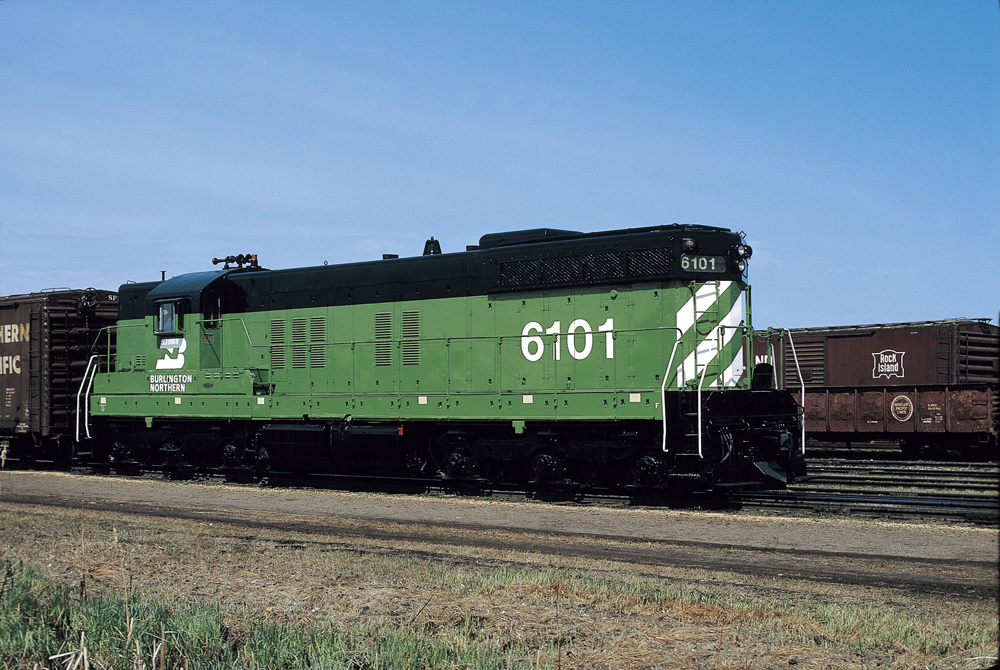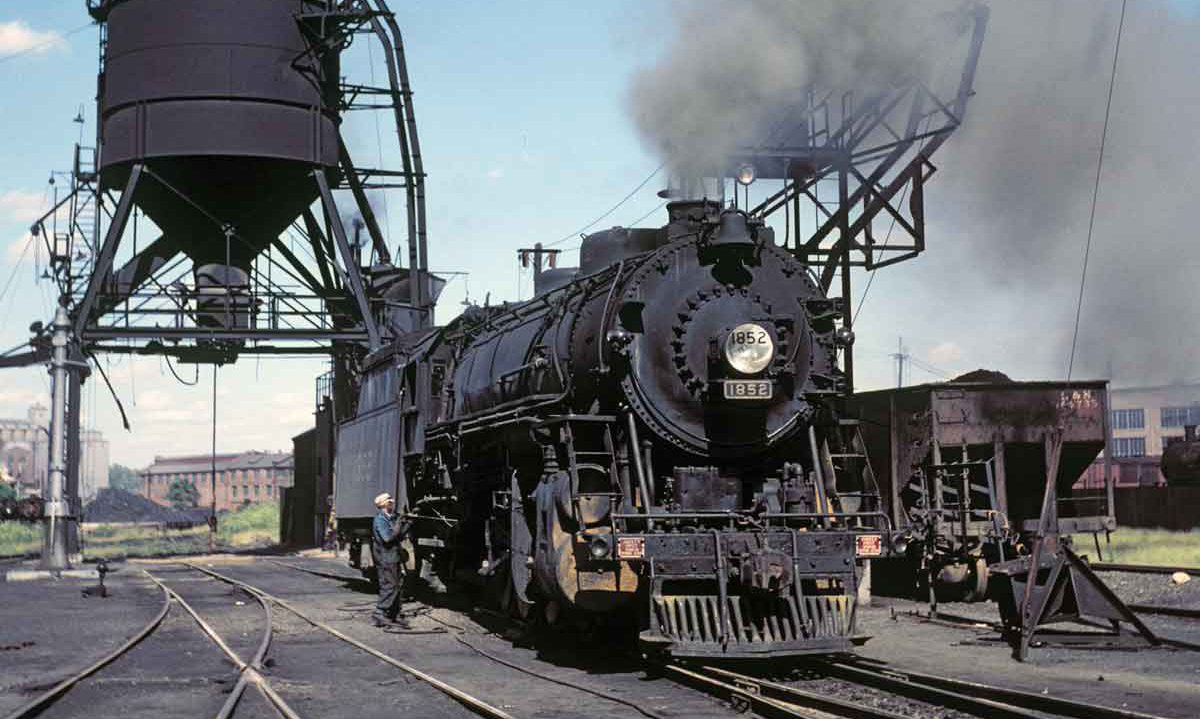Soo Line diesel locomotives came from four builders and sported two distinctive paint schemes.
The Minneapolis, St. Paul & Sault Ste. Marie had long been known by its nickname, the Soo Line. The railroad adopted that name officially in 1961 when it merged the Wisconsin Central and Duluth, South Shore & Atlantic, both of which the Soo had long controlled. The WC followed the motive power leadings of the Soo, and its locomotives were painted in the Soo Line scheme but with small “WC” sublettering. The DSS&A favored Baldwin locomotives (other than a group of four Alco RS1s), and its locomotives wore DSS&A’s own paint scheme.
Soo dieselized its through freights with EMD F3 and F7, and Alco FA, cab units. The first F3s came in 1947, wearing a maroon-and-gold similar to University of Minnesota’s (and CP’s) colors. Interestingly, the front-end striping on Soo Line diesel locomotives was similar to that of long-ago WC parent Northern Pacific. Soo’s passenger units numbered 25, including 2 A-B-B trios of ex-EMD demonstrator FP7-F7Bs, 6 new FP7s, and later, 13 GP9s. All “covered wagons” and most road-switchers wore the maroon and gold, but Soo’s diesel switchers and some early road-switchers were solid black with yellow visibility stripes on the ends.
Virtually all first-generation Soo diesels were four-motor B-Bs, exceptions being four each Alco RSC2s and RSC3s (A1A-A1A, later converted to B-B) and a lone SD9. Soo had a GE 44-tonner, seven Baldwins, and five Fairbanks-Morse H12-44 switchers to dent the EMD-and-Alco roster. DSS&A had dieselized during 1945-52, and in the merger Soo inherited its 16 Baldwins (including four center-cab transfer units) and eight RS1s. Everyday Soo steam ended Feb. 15, 1955, when 2-8-0 468 tied up at Neenah.
In the 1960s, Soo debuted a new paint scheme designed by Wallace W. Abbey. GP9 550 was the guinea pig for the new livery. In 1962 two new Alco RS27s in the bright colors arrived. They were followed in 1963 by 22 EMD GP30s, which rode on trucks from Soo’s 22 traded-in Alco FAs. Later came 10 GP35s, 4 GP40s, and in 1968, 10 GE U30Cs. The Alcos and GEs were “orphans,” though, and Soo then stuck with EMD, buying its first six-motor units, SD40s, in May 1969 and eventually having 78 SD40s and Dash-2s.
EMD’s 2,000 hp GP38-2 was perfect for Soo’s secondary lines and locals, and the model began replacing the F units in 1977. In a one-time occurrence, the first 10 of the road’s eventual 53 GP38-2s had the big “SOO” on the flanks in red, not black. The old three-digit/four-digit numbering scheme became history after those first 10. With the U30s next at 800-809, Soo renumbered the GP38-2s from 790-799 into the 4400s.
In 1982 the Soo acquired the Minneapolis, Northfield & Southern, and in 1986 merged the bankrupt Milwaukee Road, acquiring both railroads’ active locomotives in the process.
During 1987-1989, Soo bought what would be its last new power: 58 SD60s and 5 SD60Ms, all in the 6000s. The last 21 units came in a new “Candy Apple Red” with reflectorized white lettering.
Canadian Pacific, which had long owned a slight majority of Soo Line stock, acquired full ownership of Soo in 1990 and fully absorbed the railroad in 1992.





